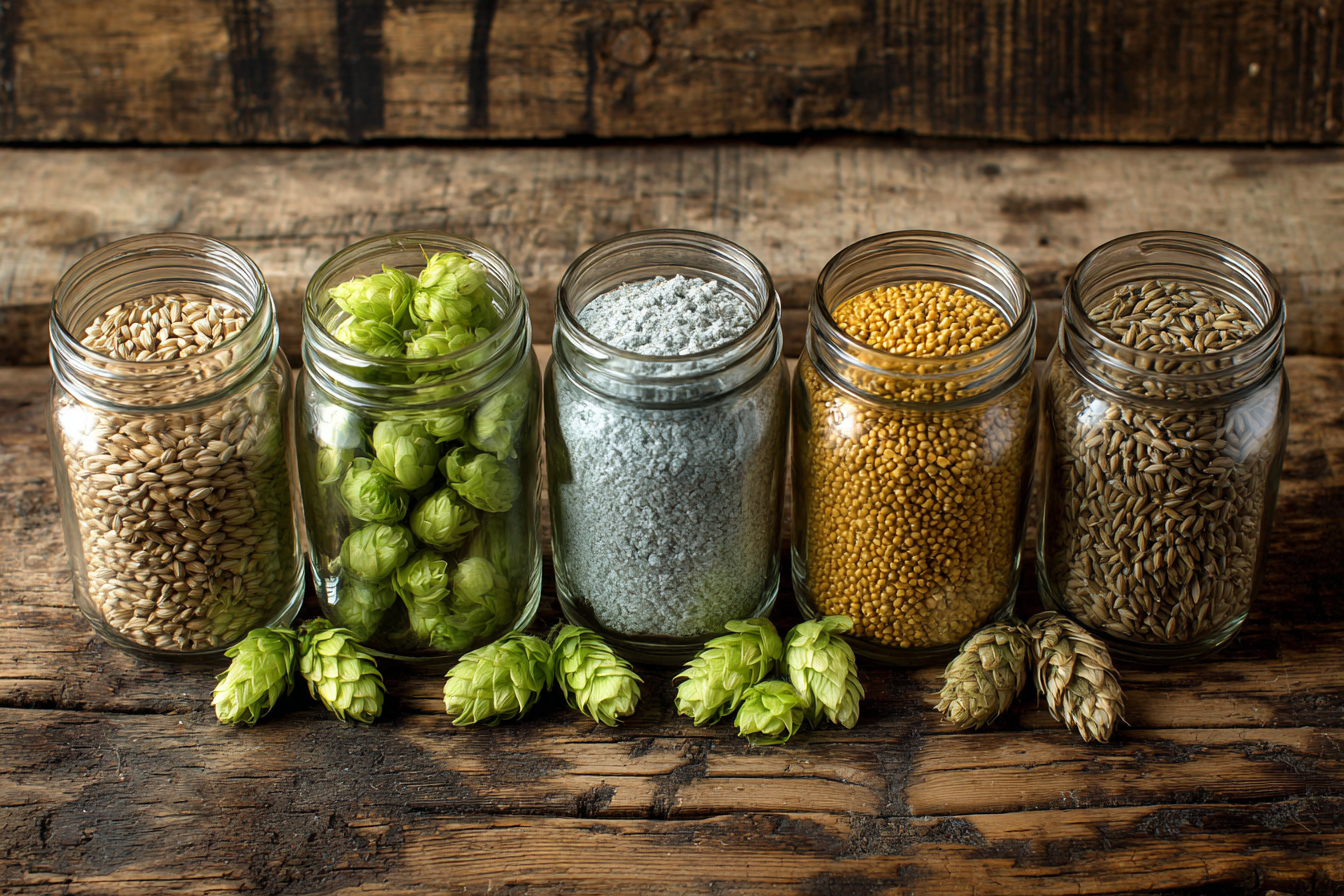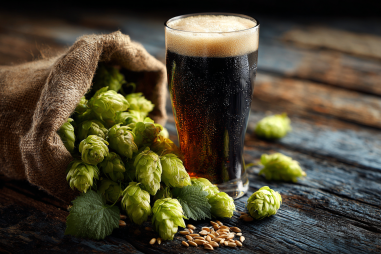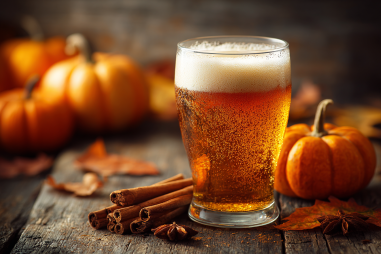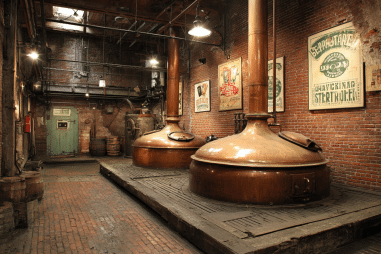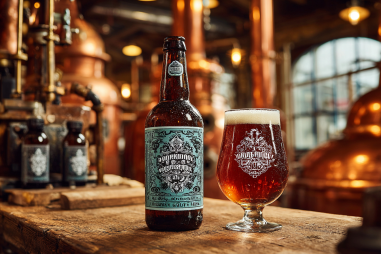Grodziskie beer is a captivating brew with a rich history that stretches back centuries to Poland. This beer style is renowned for its distinctive smoky aroma and crisp, refreshing character, features that are deeply tied to its unique ingredients. If you’ve ever wondered what gives Grodziskie its unmistakable taste, the secret lies in its special blend of malt, hops, yeast, and even the water used in brewing. Let’s take a detailed look at the key ingredients that bring this classic beer to life.
Importance of Oak-Smoked Wheat Malt
The cornerstone of Grodziskie beer’s unique profile is undeniably the oak-smoked wheat malt. Unlike other malt varieties, this malt is carefully dried over an open flame of oak wood, infusing it with a delicate smoky character that is both subtle and complex. This smoking process is what truly sets Grodziskie apart from other wheat beers around the world.
Grodziskie is primarily brewed using wheat malt rather than barley, which contributes to its light body and crisp mouthfeel. The wheat malt is usually kilned and then smoked, a process that dates back to the beer style’s origins in the town of Grodzisk Wielkopolski in Poland. The intensity of the smoke aroma can vary depending on the amount of time the malt spends being smoked and the type of oak used, but typically, it results in a gentle, pleasant smoke character that complements rather than overpowers the beer.
Using wheat malt also lends a slight sweetness and freshness to the beer, balancing the smoky notes. The finesse of oak-smoked wheat malt is vital for brewers aiming to capture the authentic Grodziskie taste, and sourcing malt that adheres to traditional smoking methods is crucial for authenticity.
Types of Hops Used Traditionally and Today
While malt plays the starring role in Grodziskie beer, hops contribute essential aromatic and bittering qualities that round out the flavor profile. Traditionally, Polish varieties such as Lubelski hops were favored for their balanced bitterness and delicate floral, earthy aromas. These hops add brightness and a subtle herbal complexity that elevates the smoke and malt flavors without overshadowing them.
In modern Grodziskie brewing, some brewers experiment with other European hop varieties, sometimes selecting those with mild fruit or spice notes to complement the oak smoke and wheat characteristics. However, the hopping remains generally restrained — the goal is to enhance the beer’s refreshing qualities while maintaining a low to moderate bitterness level.
The combination of traditional and contemporary hops ensures that the beer stays true to its roots while appealing to today’s beer drinkers who appreciate nuanced hop aromas and a balanced palate.
Yeast Strains and Their Fermentation Impact
Yeast is the often-unsung hero in brewing, responsible not only for fermentation but also for adding subtle flavor and aroma compounds. For Grodziskie, yeasts that encourage a clean fermentation profile work best, as they allow the distinctive oak-smoked malt and hops to shine through without too much interference.
Historically, farmhouse ale yeast strains were used, bringing mild fruitiness and some earthy notes. These yeasts tend to produce moderate attenuation, resulting in a beer with medium dryness and a crisp finish. Modern brewers often select ale yeast strains that ferment cleanly and support quick maturation, aligning with Grodziskie’s traditional bright and refreshing character.
Proper yeast health and fermentation control are vital, as off-flavors can mask the delicate smoke and malt balance. A well-managed fermentation brings out subtle ester notes that enhance complexity without dominating the palate.
Water Profile and Its Influence
Water is a fundamental ingredient in beer that can sometimes be overlooked. The mineral content, pH, and overall profile greatly influence how malt and hops express themselves in the final product. In Grodziskie brewing, soft water with low mineral content is preferred, similar to the natural water found in the Grodzisk Wielkopolski region.
This softer water profile allows the beer’s delicate smoky flavor to unfold naturally without the harshness that higher mineral content waters might impart. Additionally, it contributes to Grodziskie’s famously light body and crisp finish. Brewers aiming to replicate traditional Grodziskie should consider water adjustments that reduce hardness and alkalinity, softening the wort for an authentic taste experience.
Ingredient Sourcing and Quality Considerations
To craft Grodziskie beer that truly captures the essence of the style, ingredient quality and sourcing are paramount. The oak-smoked wheat malt must be produced from a reliable maltster that follows traditional smoking methods using genuine oak wood. This ensures consistency in the smoky flavor and malt quality.
Fresh and aromatic hops are equally important. Whether using traditional Polish hops or more modern varieties, hops should be stored properly to preserve their alpha acids and essential oils, which contribute bitterness and aroma.
Yeast strains specifically chosen for their clean fermentation and subtle complexity should be propagated with great care to avoid contamination and off-flavors. Additionally, brewers often replicate or adjust water chemistry based on authentic regional profiles, ensuring that this invisible ingredient enhances the beer’s characteristic features.
Ultimately, the integrity of each ingredient impacts the final product immensely. Sourcing locally when possible not only supports regional producers but also aligns the beer closer to its historical roots.
Bringing It All Together: A Harmonious Blend
Every element in Grodziskie beer brewing — from the oak-smoked wheat malt to the choice of hops, yeast strains, and water — plays an integral role in shaping the beer’s profile. The careful balance of these ingredients results in a beer that is refreshingly light, gently smoky, and subtly complex.
For brewers and enthusiasts alike, understanding these key ingredients offers a deeper appreciation of Grodziskie’s craftsmanship. Whether brewing a traditional batch or a modern interpretation, the essence of Grodziskie lies in honoring its unique malt, the understated hop contributions, clean yeast fermentation, and the soft sparkling water that ties it all together.
In the end, it’s this careful blend of carefully selected and thoughtfully combined ingredients that keeps Grodziskie beer cherished by those who seek a flavorful yet delicate drinking experience steeped in Polish brewing heritage.

